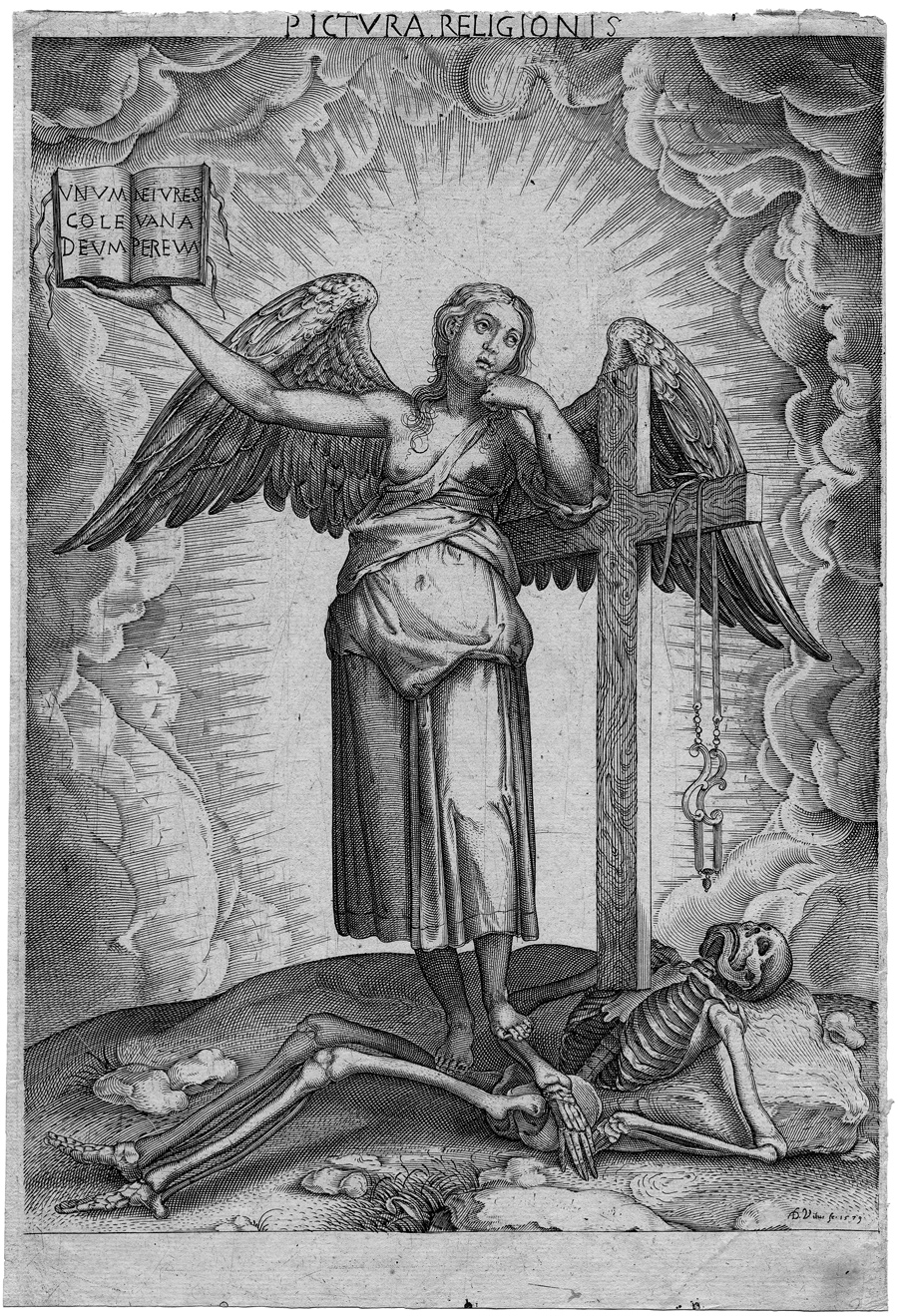Loading the page ...
Domenico Vitus
(active 1576–1586)
Pictura Religionis. Engraving. 31.5 x 22 cm. 1579. Le Blanc 11; not in Nagler.
Virtually nothing is known about the life and work of Domenico Vitus. He was a monk at the Vallombrosa Benedictine Abbey in Tuscany which played a very active role in enforcing the major ecclesiastical reforms introduced by Pope Gregory XIII during the Counter-Reformation. Between 1576 and 1586 Vitus created a small printed oeuvre on largely religious themes. Nagler draws attention to the fact that Vitus was influenced in his work as an engraver by Agostino Veneziano and Giorgio Ghisi. He also produced a number of engravings for the Speculum of the Roman publisher Antonio Lafreri.
The Pictura Religionis is missing from Nagler’s list. The work has been executed in a rough and rather crude engraving technique, which was not intended to achieve any aesthetic effect but rather to serve didactic and religious purposes, which was fully in keeping with the aims of the Counter-Reformation. The formal austerity of the execution matches the earnestness of the message. The work features a personification of religion. A winged, partially bare-breasted female figure, who is surrounded by a halo, holds in her right hand an open book, in which the first and second commandments in the Bible are inscribed as a motto. Leaning with her right elbow on the cross, from the crossbeam of which hangs a bridle, she tramples death underfoot.
The simple clothing of Religio symbolises her contempt for worldly goods. Her bare breast stands for purity and the cross for peace. With her wings she teaches mankind to strive heavenwards and with the halo she drives out spiritual darkness. The bridle cautions moderation, while the pose adopted by Religio symbolises victory over death (see Ilja M. Veldman, Crispijn de Passe and his progeny (1564–1670). A Century of Print Production, Rotterdam 2001, p. 115).
Interestingly enough, the same iconography can be found on engravings by contemporary Flemish masters, such as Pieter Baltens (Hollstein 9) and Crispijn de Passe I (Holl 628), thus documenting the exchange of ideas that took place between Northern Europe and Italy. Also worthy of note is the fact that the portrayal of Religio has its roots in a Protestant emblem contained in the second edition of the Poemata by Theodore de Bèze, the successor to Calvin. Vitus did not take over de Bèze’s accompanying Latin verse, but instead filled the open book with the two quotations from the Decalogue.
A superb, clear and nuanced impression with thread margins. Minor defects, otherwise in very good condition.
